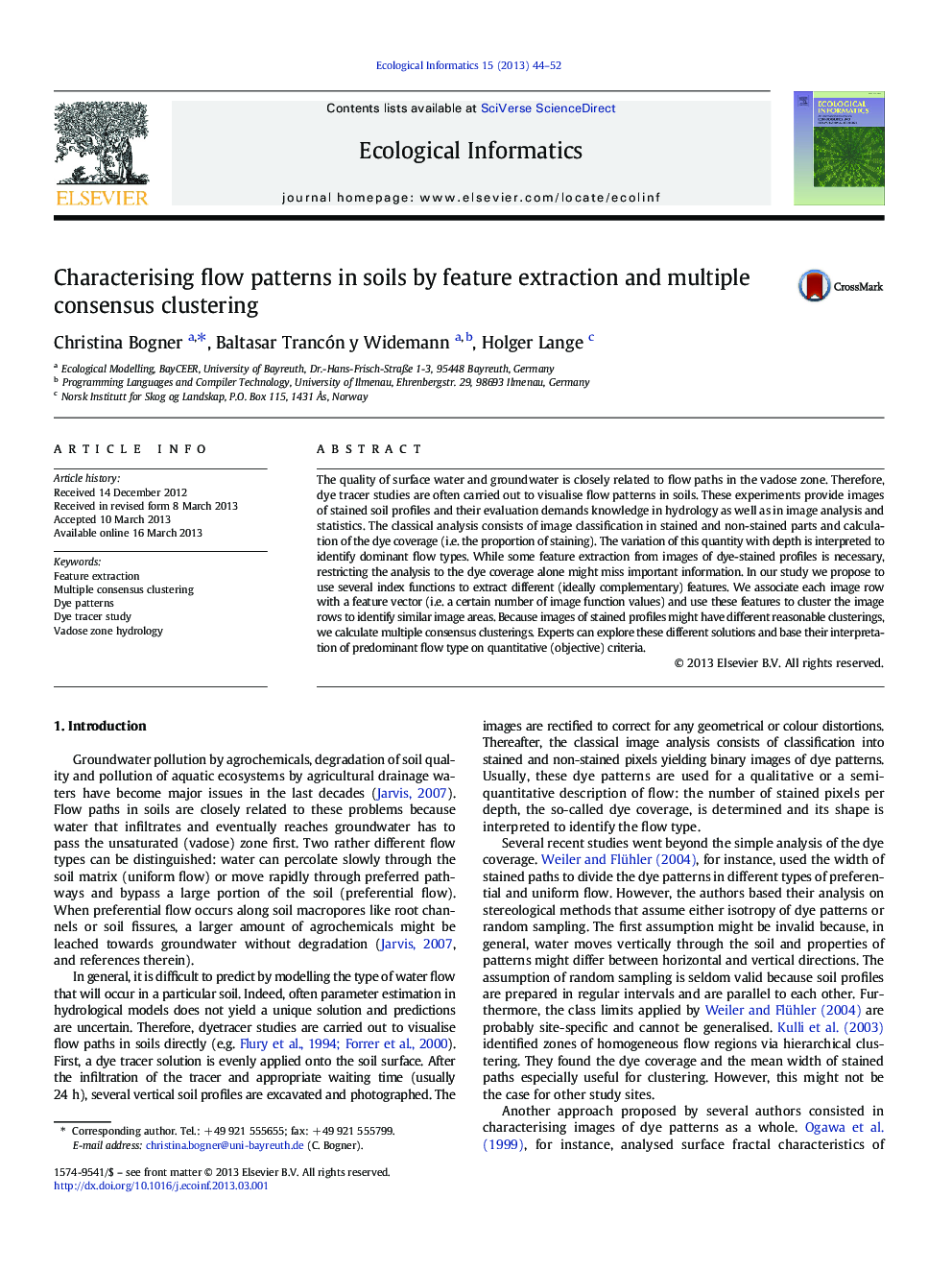| Article ID | Journal | Published Year | Pages | File Type |
|---|---|---|---|---|
| 4374993 | Ecological Informatics | 2013 | 9 Pages |
•We analyse images from dye tracer experiments in soils.•Hydrological features are extracted via index functions.•Image rows are classified by unsupervised learning (clustering).•Multiple consensus deals objectively with alternative clusterings.•This framework supports the expert in interpreting large sets of images.
The quality of surface water and groundwater is closely related to flow paths in the vadose zone. Therefore, dye tracer studies are often carried out to visualise flow patterns in soils. These experiments provide images of stained soil profiles and their evaluation demands knowledge in hydrology as well as in image analysis and statistics. The classical analysis consists of image classification in stained and non-stained parts and calculation of the dye coverage (i.e. the proportion of staining). The variation of this quantity with depth is interpreted to identify dominant flow types. While some feature extraction from images of dye-stained profiles is necessary, restricting the analysis to the dye coverage alone might miss important information. In our study we propose to use several index functions to extract different (ideally complementary) features. We associate each image row with a feature vector (i.e. a certain number of image function values) and use these features to cluster the image rows to identify similar image areas. Because images of stained profiles might have different reasonable clusterings, we calculate multiple consensus clusterings. Experts can explore these different solutions and base their interpretation of predominant flow type on quantitative (objective) criteria.
